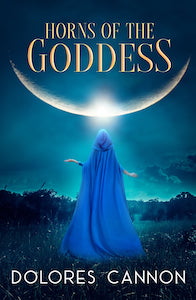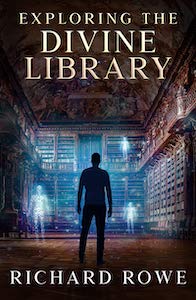
Horns of the Goddess, by Dolores Cannon
Ozark Mountain Publishing, 1956945210, 400 pages, March 2023
“At the beginning of time everybody was in tune with the mother Earth, for the souls had just begun their journey. And they were but newly separated from her, and so they remembered how to be in harmony with her. And they knew how to be in harmony with nature. And, so they observed the things they knew they needed to be observed in order to stay that way.1
Horns of the Goddess by Dolores Cannon is an interesting exploration of the concept of past lives, the use of past life regression hypnotherapy to gain access to the information of the past lives of clients, and the impact that information may carry within the greater scientific and spiritual communities of the present. The quote above was taken from a chapter taken from the transcription of a session of one of the three individuals who shared past lives during the time of the Druids and are the theme of focus for the title.
Cannon was a regressive hypnotherapist and psychic researcher who recorded the sessions of multiple clients and became one of the collectors of “lost” knowledge, much of which was verified by the findings of archeologists. This is an important factor of consideration as the reader moves through this title and recognizes the credibility of both technique and content Cannon brings to material that could be considered just another example of new age fluff.
The content was compiled by her daughter, Nancy Vernon, and much of the information contained within was withheld in being made part of Dolores’ public research offerings because of the sensitive nature of the information shared by her subjects. Timing in the release of this information and its consideration as potential truths was very important to Cannon. Given the timing of Cannon’s passing while writing this book provided an opportunity for some of the more controversial information to be included.
Horns of the Goddess is formatted into three sections with chapters of content within. Each chapter is structured as a question (from Cannon) with answer (from the individual’s past life self/ves) transcribed from the recording made during hypnosis. Dolores’ impressions and notes are interspersed throughout, giving additional insight and background to what the reader is taking in.
The “Introduction: The Time Traveler” provides the reader with Cannon’s path that led her to the writings and research she committed herself to after her children were grown. She describes the refinements and adjustments she crafted to the techniques of hypnotherapy that allowed for a deeper level of communication between the client and past life memories and now are the choice of practice for past life regressionists.
“Section 1: Life as a Druidess” begins the journey through timelines of Druidry and events leading up to the Inquisition. In “Chapter 1: The Druidress (Karen)” the reader is introduced to one of her subjects who offers insights throughout a good portion of the book through multiple past lives experienced. She speaks of one of her subjects, Karen:
“During 1982 and 1983 I worked with Karen on a regular basis. I discovered the true meaning of time travel during my sessions with her. We eventually explored thirty different lifetimes, and the detailed information that poured out of her was phenomenal. She was able to so totally become the other personality that she supplied historical information as well as cultural and theological.2
“Section 2: Brenda’s Story as Astelle” is filled with some of the more controversial material and brings to light from the subject’s experiences the horrors of the Inquisition and the lengths taken by the church to tamp down the nature-based practices….
“In the beginning when she was describing the horrors of the Inquisition and the callousness of the Church, I told her in the session…… “They will hang me from the highest tree if I ….tell about the horrible things the church did in those days. They will never stand for hearing such things about their church fathers”…. There is too much explosive material contained within this story. It is probably the truth about the way the church really behaved, but I feel I must wait a while before I dare to write it.”3
The chapters contained within this section are the meat of the book and a wealth of information about how the “old ways”’ of nature based religious practices would have been carried out. Insights into the use of Pentagrams, signs, omens, communication with animals, the lore and legends of the magic of the Druids, and the inhabitants of greater earth such as the Fae, gnomes, giants, etc… are offered through the memories of Brenda/Astelle in her sessions with Dolores. Woven throughout these chapters are the specifics of how the church made use of these beliefs and the ultimate return of the Inquisition period.
Rounding out the density of information in Section 2, Dolores returns to her long time subject Karen and shares the impressions received as Karen travels through the subsequent time periods of her Druidic days and returns to past lives as a minstrel, a physician, a child who sees faeries and a Greek priestess. “Section 3: More Lives with Karen” provides the reader with ample opportunity to give consideration to the possibility of multiple lifetimes that are experienced by a singular consciousness/soul.
In conclusion, I found Horns of the Goddess to be a fascinating and thought provoking read. Regardless of your perspective on the veracity of past lives, reincarnation and the storehouse of the subconscious in maintaining information that there is no reasonable explanation for the individual to know, the content of this title is engaging and completely immersive in its reading.
“Dolores opened our eyes to wondrous and mysterious worlds. She dared to go into the forbidden realms of what the mind contained. If it had not been for her insatiable appetite to want to know more and to ask the many, many questions we might never have known the lost knowledge she found with her sessions.”4

Robin Fennelly is an Elder within the Assembly of the Sacred Wheel Tradition [www.sacredwheel.org]. She is a dancer, teacher, astrologer, author, ritualist and seeker of all things of a spiritual nature. Her writings and classes incorporate a deep understanding of Eastern practice and Western Hermetics and bring a unique perspective towards integration and synthesis of the Divine and Mundane natures of our being. She is a mother of five and lives in Eastern PA with her husband of 45+ years.


